Nitrogen Fixation - How it Works and a Look at Some Super Nitrogen Fixing Trees, Shrubs and Herbs
An essential component of any regenerative landscape will be the Nitrogen-fixing perennial plants within the community of fruits, nuts and herbs and other plants.
During this post, we will look at why Nitrogen is important for plants, How Nitrogen can be biologically sourced and we'll profile some of our favorite Nitrogen-fixing trees, shrubs and herbs
Nitrogen is an essential nutrient for plant growth and development and although around 78% of the earth's atmosphere is nitrogen, plants cannot utilize this. Plants instead depend upon combined or fixed forms of nitrogen, such as ammonia and nitrate. Currently, the majority of this nitrogen is provided to cropping systems in the form of industrially produced nitrogen fertilizers. The use of these fertilizers has led to worldwide ecological problems, such as the formation of coastal dead zones, and requires a high energy input to produce. Biological nitrogen fixation, on the other hand, offers a natural means of providing nitrogen for plants.
Biological Nitrogen fixation is an important component of regenerative agriculture, organic gardening/farming, forest gardening, and other polyculture practices. Through a partnership with micro-organisms in their roots, some plants can turn atmospheric nitrogen into nitrogen fertilizers useful to themselves but also becoming available to their neighbours over time through root dieback, leaf fall, and chop and drop pruning. These are known as the nitrogen-fixing plants.
This is a mutually beneficial relationship with the plant providing carbohydrates obtained from photosynthesis to the microorganism and in exchange for these carbon sources, the microbes provide fixed nitrogen to the host plant.
While it does not replace the need to bring in other nutrients depleted by harvests such as phosphorus and calcium, nitrogen fixation provides a valuable biological source of an essential fertilizer.
There are two main groups of microbes that plants associate with in order to utilize atmospheric nitrogen to fuel growth. They are Frankia and Rhizobium.
Frankia
Many plants partner with micro-organisms called Frankia, a group of Actinobacteria. These plants are known as actinorhizal nitrogen fixers.

Actinorhizal plants are found in many ecosystems including alpine, xeric, chaparral, forest, glacial till, riparian, coastal dune, and arctic tundra environments and can be found in the following plant families
Betulaceae, the birch family.
Myricaceae, the bayberry family.
Casuarinaceae, the Austrian “pines”.
Elaeagnaceae, the oleasters.
Rosaceae, the rose family.
Rhamnaceae, the buckthorn family.
These plants tend to thrive in nitrogen-poor environments and are often the pioneer species in plant communities playing an important role in plant succession.
Rhizobium
By far the most important nitrogen-fixing symbiotic associations are the relationships between legumes (plants in the family Fabaceae) and Rhizobium and Bradyrhizobium bacteria. These plants are commonly used in agricultural systems such as alfalfa, beans, clover, cowpeas, lupines, peanuts, soybean, and vetches.
The Rhizobium or Bradyrhizobium bacteria colonize the host plant’s root system and cause the roots to form nodules to house the bacteria. The bacteria then begin to fix the nitrogen required by the plant. Access to fixed nitrogen allows the plant to produce leaves fortified with nitrogen that can be recycled throughout the plant. This allows the plant to increase photosynthetic capacity, which in turn yields nitrogen-rich seed.
So now you know what nitrogen fixation is, let's take a look at some of my favorite Nitrogen Fixing Trees - Shrubs and Herbs that we use throughout our polyculture gardens.
Regenerative Landscape Design - Online Interactive Course
Want to learn how to design, build and manage regenerative landscapes? Join us on our Regenerative Landscape Design - Online Interactive Course. We look forward to providing you with the confidence, inspiration, and opportunity to design, build and manage regenerative landscapes, gardens, and farms that produce food and other resources for humans while enhancing biodiversity.
You can access the course material at anytime and join the live sessions and interactive forums that run from May - Oct every year. All members of the Bloom Room receive a 500 EUR discount. To take up this offer all you have to do is become an annual subscribers to our Substack and register here with the promo code BLOOM.
I look forward to you joining !
Nitrogen Fixing Trees
Italian Alder - Alnus cordata
Overview: Alnus cordata - Italian Alder is a deciduous tree that grows up to 25m at a fast rate. It has a long season in leaf - from April to December - and is in flower in March. Has a heavy leaf canopy and when the leaves fall in the winter, they help to build up the humus content of the soil. The species is monoecious and is pollinated by wind. Thrives on poor and dry soils, even sometimes on chalk, but prefers to be near water.
Uses: Windbreak, pioneer species for re-establishing woodlands, ornamental, biomass production, coppice, ornamental. The timber has a red/orange appearance and is used for turning and carving.
Nitrogen Fixing Potential: Level of fixation is not specified on the USDA website.
Biodiversity: The catkins of Italian Alder provide early pollen for insects, and the over-wintering cones are a good food source for birds.
Propagation: Seed germination rates are generally high. Transplant into permanent positions when growth has reached a suitable level.
Black Locust - Robinia pseudoacacia
Overview: Robinia pseudoacacia - Black Locust is a rapidly growing, deciduous tree that is native to North America. This member of the pea and bean family (Leguminosae) has now naturalized in many parts of Europe. It is in flower in June, and the seeds ripen from November to March. The species is hermaphrodite. It's a good tree for establishing on degraded land but can become invasive due to its prolific seed production, and it also spreads by suckering from the roots. Prefers well-drained soil and sunny positions.
Uses: Shelterbelts and windbreaks, restoration projects due to extensive root system, dynamic accumulator, ornamental. The wood is very durable and rot-resistant, good for posts and beams in construction. Essential oil is obtained from flowers and used in perfumery.
Nitrogen Fixing Potential: The species is classified by USDA as being a MEDIUM Nitrogen fixer with estimated yields of 85-160lbs/acre or 39-72kg/4050m² or 0.014g /m2.
Biodiversity: The pretty flowers open in May or June after the leaves have developed and are attractive to a wide range of pollinators, including bees that produce "Acacia" honey. Noted for attracting a wide range of insects.
Propagation: Pre-soak the seed for 48 hours in warm water and sow in late winter in a cold frame. Prick out the seedlings into individual pots when ready and grow them on in the greenhouse for their first winter. Plant into their permanent positions the following summer. For cuttings, use small new-growth branches at least 8 inches long with a leaf node near the cut. Can take up to 3 months for roots to develop.
Sea Buckthorn - Hippophae rhamnoides
Overview: Hippophae rhamnoides - Sea Buckthorn is a deciduous thorny shrub growing to around 6m in height. It is in flower in April, and the seeds ripen from September to October. Provides an abundance of highly nutritious orange berries in the autumn. The species is dioecious and is pollinated by wind. Requires a sunny position and does very well in sandy soils. Fairly slow growing and plants produce abundant suckers.
Uses: Shelter hedge, Pioneer species to reestablish woodlands, Maritime exposure tolerated - stabilises sand dunes. The wood of Sea Buckthorn is tough, hard, very durable, fine-grained, and used for fine carpentry and turning.
Nitrogen Fixing Potential: The species is classified by USDA as being a MEDIUM Nitrogen fixer with estimated yields of 85-160lbs/acre or 39-72kg/4050m² or 0.014g /m2
Biodiversity: Provides shelter and in the autumn, berries for birds. The ripe fruits also attract insects, and therefore birds that feed on insects such as thrips, earwigs and mites. Deer, mice and other rodents may also feed on sea buckthorn, and bees and hoverflies are attracted to the flower's nectar.
Propagation: Sow seed in spring in a sunny position in a cold frame. Germination is usually quick and successful, although 3 months of cold stratification may improve the germination rate further. Once big enough, transplant into individual pots and grow on in a greenhouse for the first winter. Take cuttings at the end of autumn or very early in the spring before the buds burst. Store them in sand and worm casting mix until April, then cut them into 7 - 9cm lengths and plant them in a sunroom or with plastic bags and bottom heat.
Welcome to our Online Store where you can find Forest Garden/ Permaculture plants, seeds, bulbs, and Polyculture multi-packs along with digital goods and services such as Online Courses, Webinars and eBooks. We hope you enjoy the store and find something you like. It's your purchases that keep our Project going.
You can also find our full list of trees. shrubs and herbs for forest gardens on our nursery website.
Nitrogen Fixing Shrubs
Elaeagnus umbellata - Autumn Olive
Overview: Elaeagnus umbellata - Autumn Olive - A large deciduous shrub from E.Asia, growing 4.5 m high and 4.5 m wide, tolerates part shade, very drought tolerant. Branches are often thorny, and leaves are bright green and silvery beneath. Yellowish-white, fragrant flowers are produced in May-June, followed by rounded silvery brown (ripening red) fruits in Sep-Oct. Sometimes cultivated for its edible fruit. There are many named cultivars. Flowers are rich in nectar and very aromatic. Plants can fruit in 5 yrs from seed. This specie is considered invasive in the U.S.
Uses: Hedging plant, ornamental, and tolerates maritime exposure succeeding in the most exposed positions. The plant is used as a nurse tree, when planted with fruit trees it is reported to increase the overall yield of the orchard by 10%. It can also be grown as a biomass crop on a 3-year rotation.
Nitrogen Fixing Potential: The species is classified by USDA as being a MEDIUM nitrogen fixer with estimated yields of 85-160lbs/acre or 39-72kg/4050m² or 0.014g /m2.
Biodiversity - The shrubs will begin to flower in the 4th or 5th year after planting and are attractive to a wide range of pollen and nectar-feeding invertebrates. If you leave some fruits on the tree they provide a good source of winter food for birds. In time as the hedge thickens up with regular pruning, suitable nesting habitat will form inside the lower part of the hedge. Birds such as Wren, Chiffchaff, and Robins are commonly found in dense low hedging. These birds can help to keep common vegetable pest populations low.
Propagation: Seed - best sown as soon as it is ripe in a cold frame. It should germinate in late winter or early spring, though it may take 18 months. Stored seeds can be very slow to germinate, often taking more than 18 months. A warm stratification for 4 weeks followed by 12 weeks of cold stratification can help. The seed usually (eventually) germinates quite well. Prick out the seedlings into individual pots as soon as they are large enough to handle and plant out when they are at least 15 cm tall.
Caragana arborescens - Siberian Pea Tree
Overview: Caragana arborescens - Siberian Pea Tree - A deciduous shrub originating from Central Asia belonging to the Fabaceae (legume) family growing to 5-6m high and 4m wide with an upright habit. It grows vigorously. Flowers are borne from buds on the previous year's wood and are typical of flowers from this family. Flowering occurs in May. Pollination is via bees, usually wild bumble bees. Pods develop from flowers - looking like small pea pods, they are 4-5 cm long. The pods ripen to amber or brown from June -July onwards and seeds fall by August. The plant is extremely hardy tolerating winter temperatures of -40. Prefers a continental climate with hot dry summers and cold winters.
Uses: Windbreaks and shelter belts, wildlife-erosion control plantings, Extensive root system that stabilizes the soil. Plants make good wildlife fodder and can be used to as poultry food. A fiber is obtained from the bark and used for rope making.
Nitrogen Fixing Potential: The species is classified by USDA as being a MEDIUM Nitrogen fixer with estimated yields of 85-160lbs/acre or 39-72kg/4050m² or 0.014g /m2
Biodiversity - The shrubs will begin to flower in the 4th or 5th year after planting and are attractive to a wide range of pollen and nectar-feeding invertebrates from April - May.
In time as the hedge thickens up with regular pruning, suitable nesting habitat will form inside the lower part of the hedge. Birds such as Wren - Troglodytes troglodytes, Chiffchaff - Phylloscopus collybita and Robin - Erithacus rubecula are commonly found in dense low hedging. These birds can help to keep common vegetable pest populations low.
Propagation: Seed propagation is the norm. Seeds germinate better after a short period of stratification and/or soaking in warm water prior to planting.
Cytisus scoparius - Broom
Overview: Cytisus scoparius - Broom A hardy Nitrogen fixing shrub native to Europe growing to 2.4 m by 1 m at a fast rate. Its bright yellow flowers appear in spring, from May to June, and attract a range of invertebrates. A versatile plant is well suited to many soil types that can grow in nutritionally poor soil. Prefers a sunny position but tolerates some shade and will succeed in exposed conditions including maritime exposure. A deep root system means they are very drought tolerant once established and grow well on dry banks. Very tolerant of cutting, it regenerates quickly from the base.
Uses: Ornamental, Maritime exposure tolerated - stabilizes sand dunes. Urban plant - tolerates atmospheric pollution. Essential oil from the flowers is used in perfumery. Great plants for fiber, basketry, and good brooms (hence the common name!). You can either place stems on the ground and go over them with a rotary lawn mower to break the biomass into smaller pieces or leave them as rough mulch.
Nitrogen Fixing Potential: The species is classified by USDA as being a HIGH Nitrogen fixer with estimated yields of +160lbs/acre or +72kg/4050m² or 0.018g /m2.
Biodiversity - A good bee plant and also a good food plant for many caterpillars - it reportedly provides the food for the larvae of the green hairstreak butterfly. Ants are attracted to the seeds, feeding on the juicy attachment that holds them to the pods and thus distributing the seed.
Propagation: The plant is very easy to grow from seed and large quantities of plants can be grown very quickly. Seed harvested in the summer can be sown straight after picking and overwintered indoors (or protected and planted out the following autumn). Seeds germinate better after soaking in warm water for 8-12 hrs prior to planting.
Elaeagnus angustifolia - Oleaster, Russian Olive
Overview: Elaeagnus angustifolia - Russian Olive - A deciduous large shrub or small tree from Europe and W.Asia, growing approx 7m high and 7m wide. Tolerates part shade, salt, and air pollution. It has silvery branches often thorny, with silvery scales when young, silvery willow-like leaves, silvery flowers in June, and yellowish-silvery fruits ripening in October. Plants prefer continental climates. This species is often cultivated in Europe and Asia for its edible fruits (there are many named varieties some of which are thornless). The plants begin to flower and fruit from three years old. It is very tolerant of pruning even right back into old wood. The flowers are sweetly scented. Fruits hang on the plant for much of the winter providing a valuable source of winter food for birds. The fruit is readily eaten and disseminated by many species of birds. This species is considered invasive in the United States.
Uses: Hedging plant (NB does not form a dense screen), biomass crop, tolerates maritime exposure. Edible fruit -raw or cooked as a seasoning in soups, and the expected fruit yields are 7-9kg per plant. The taste is dry sweet and mealy. The seed oil, flowers, and leaves are used medicinally. An essential oil obtained from the flowers is used in perfumery. Leaves are used as goat and sheep fodder. The wood is hard, fine-grained, and used for posts, beams, carving, and domestic items and makes good fuel.
Nitrogen Fixing Potential: This specie is classified by USDA as being a HIGH nitrogen fixer with estimated yields of 160+ lbs/acre or 72>kg/4050m²
Biodiversity: When in flower the plants are attractive to a range of pollinators and I've often observed our plants teeming with flying insects during the flowering period. When trimmed the plants will ramify well and can form a dense hedge-like appearance. The interior of the plants in this condition is perfect for nesting birds and for small mammals and lizards to retreat into when under threat.
Propagation: Establishment and reproduction of Elaeagnus angustifolia are primarily by seed, although some spread by vegetative propagation also occurs. Cold stratification of the seed is required for 30-60 days. Sowing when fruits are ripe will probably provide the best germination results.
Nitrogen Fixing Herbs
Trifolium repens -White Clover
Overview: Trifolium repens - White Clover - White clover is a dwarf, prostrate, mat-forming perennial that can spread via stems that freely root along the ground at the nodes. Easily grown in average, medium, well-drained soils in full sun to part shade. Prefers moist soils in light shade, but tolerates full sun and moderately dry soils.
Uses: White clover has been described as the most important forage legume of the temperate zones. Besides making an excellent forage crop for livestock, clovers are a valuable survival food: they are high in proteins and although not easy for humans to digest raw, this is easily fixed by boiling the harvested plants for 5–10 minutes. Dried flower heads and seedpods can also be ground up into nutritious flour and mixed with other foods or can be steeped into an herbal tea. The plant's ability to spreads aggressively by creeping stems makes it a good ground cover plant. The plant is also used as a companion plant when undersown with cereals or tomatoes.
Nitrogen Fixing Potential: The species is classified by USDA as being a HIGH Nitrogen fixer with estimated yields of +160lbs/acre or +72kg/4050m² or 0.018g /m2.
Other sources state up to 545 kg of N per hectare per year is possible.
Biodiversity: The plants provide a source of nectar and pollen for a number of native bees as well as the honey bee.
Propagation: Best propagated by seed. Pre-soak the seed for 12 hours in warm water and then sow in spring in situ. Division is also possible in the spring and autumn.
Planting Material: For covering an area quickly seed is the best option.
Onobrychis viciifolia - Sainfoin
Overview: Onobrychis viciifolia - Sainfoin is a perennial herbaceous legume. It has deep tap-roots which are helpful in harvesting minerals from the subsoil. It's in flower from June to August and is hermaphrodite. Sainfoin flowers are pink, and attractive and start blooming with the lower flowers, then moving up the stem. Produces a good bulk of foliage, and makes an excellent green cover/manure. Prefers a well-drained neutral to alkaline sandy loam in full sun and loves full sun.
Uses: Green manure, soil stabilizer (due to deep tap root), companion plant. Grown for pasture, hay or silage since it is very palatable to livestock.
Nitrogen Fixing Potential: The species is classified by USDA as being a MEDIUM Nitrogen fixer with estimated yields of 85-160lbs/acre or 39-72kg/4050m² or 0.014g /m2
Biodiversity: Sainfoin produces Nectar and Pollen for Honeybees and Bumblebees. This nectar is thought to be one of the highest-yielding honey plants. The flowers of Sainfoin attract huge numbers of insects and some reports claim Sainfoin may attract up to ten times more bees than white clover. . Deer enjoy sainfoin, and some game birds such as turkey and pheasants shelter among the plant.
Propagation: For the best results pre-soak seed for 12 hours in warm water and sow in situ in the spring
All of the plants mentioned above and more are available from our bio nursery as plants or seeds and some species are available at special discounts for bulk orders. You can find out more info about our plants by clicking on the plant names below.
Albizia julibrissin - Silk tree
Amorpha fruticosa - False Indigo
Caragana arborescens - Siberian Pea Tree
Cercis siliquostrum - Judas Tree
Colutea x media - Bladder Senna
Cytisus scoparius 'Luna' - Broom
Elaeagnus angustifolia - Russian Olive
Elaeagnus x ebbingei - Elaegnus
Elaeagnus umbellata - Autumn Olive
Elaeagnus commutata -Wolf Willow
Hippophae rhamnoides - Sea Buckthorn
Onobrychis viciifolia - Sainfoin
Robinia pseudoacacia - Black Locust
Spartium junceum - Broom
Trifolium repens - White Clover
Support Our Project
If you appreciate the work we are doing you can show your support in several ways.
Become a member of the Bloom Room. A $70 annual subscription to our Substack provides you with access to live sessions, design tutorials, a members forum and more, see details here.
Make a purchase of plants or seeds from our Nursery or Online Store
Joining us for one of our Practical Courses or Online Courses
Comment, like, and share our content on social media.
We offer a diversity of plants and seeds for permaculture, forest gardens, and regenerative landscapes including a range of fruit and nut cultivars. We Deliver all over Europe from Nov - March. - Give a happy plant a happy home :)







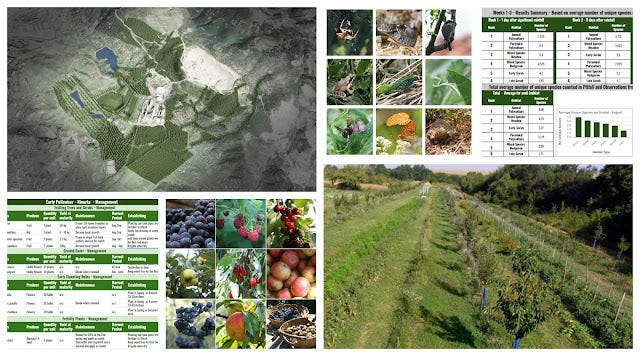

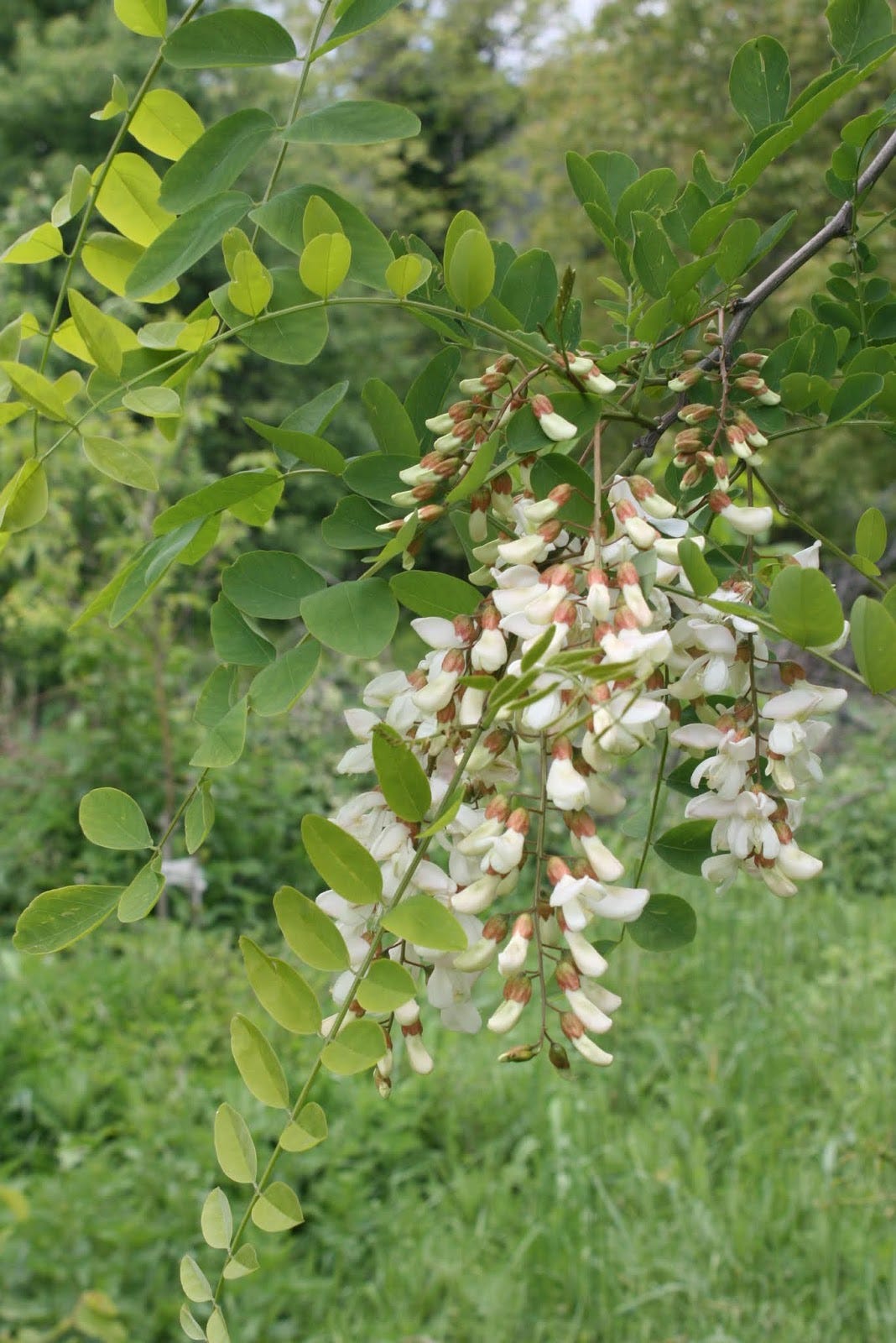


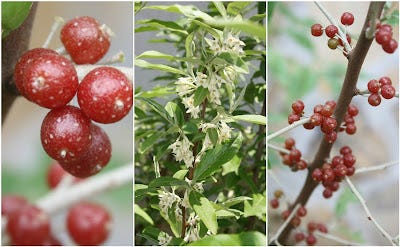

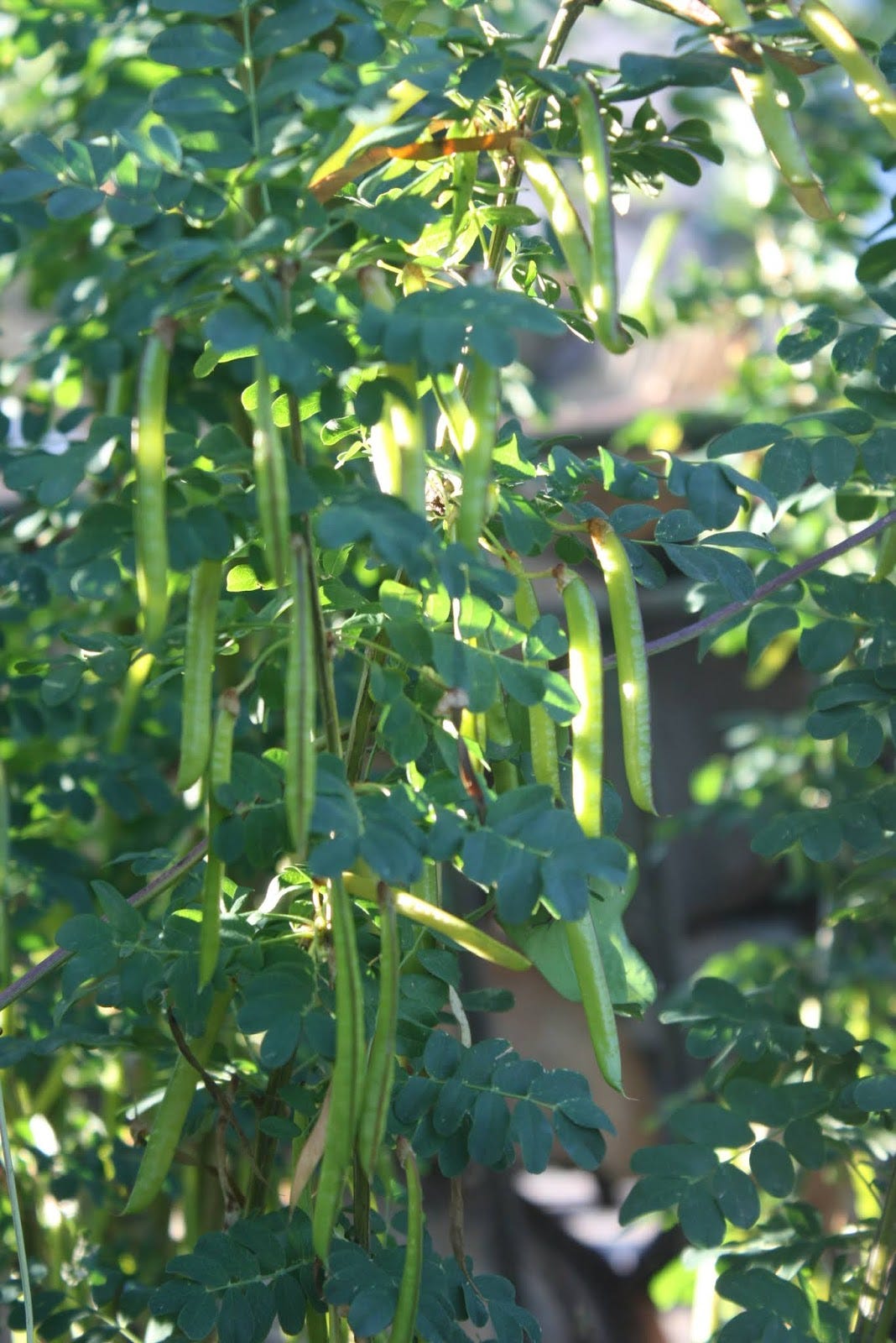
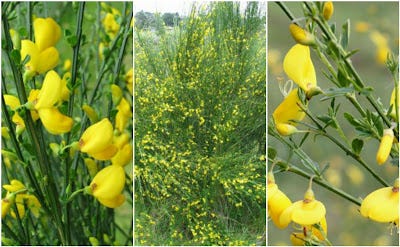





https://www.sciencedirect.com/science/article/abs/pii/S1164556317305502
By the way, I did several years of ethnographic fieldwork among hunter-gatherers in the Kalahari. When I first arrived, I expected to find them occasionally hunting giraffe. I had seen the film made in the far western Kalahari by John Marshall, a film called “The Hunters” – which showed a giraffe hunt. So I was puzzled to see plenty of giraffe in the area but no evidence of them being hunted by the Kua San. I asked about this. I was told that a giraffe that “offered itself” would not be refused, but that this was extremely rare, and that giraffe were not generally targeted. If I wanted the whole story, I was told, I should go and see a certain woman.
So I did.
I found her in a campsite deeper into the remote area, very near the Central Kalahari Game Reserve. She was tending to her grandchildren and eagerly agreed to answer my questions about giraffe. Apparently she was the local expert; obsessively interested in anything to do with giraffe since childhood. She had assembled a massive number of observations, both on her own, and from accounts of hunters, and other people, and handed down through many generations. I found this out in later interviews.
Her answer to my initial query was masterful in its simplicity and accuracy. Hunting giraffe is unwise, she said “because they were the midwives of the Acacia trees.” God had made the giraffe, she told me, just tall enough to eat the leaves and harvest the pods of the tree, because they would then deposit the offspring of the tree far from the parent plant. This ensured that Acacia continued to “spread life” into the sands. She had often noticed the young of the tree sprouting from giraffe dung heaps.
I noted all this down and essentially forgot about it until many years later when I learned that these Acacias are, in fact, woody legumes: through a symbiotic bacterial colony in their roots, they fix nitrogen. In the sandy Kalahari, these trees and other legumes were essential species that permitted grasses and herbs to flourish.
Giraffe and Acacia were also symbiotes, both equally critical in keeping the savanna green.
She knew.
another great article, thanks. When I teach this aspect (N-fixation) I try & keep it clear that it's not the plants that fix N but the microbes living symbiotically with them. In theory there's no such thing as a N-fixing plant. It may seem pedantic, but just giving credit where it's due.... and illustrating the functionality of symbiosis.